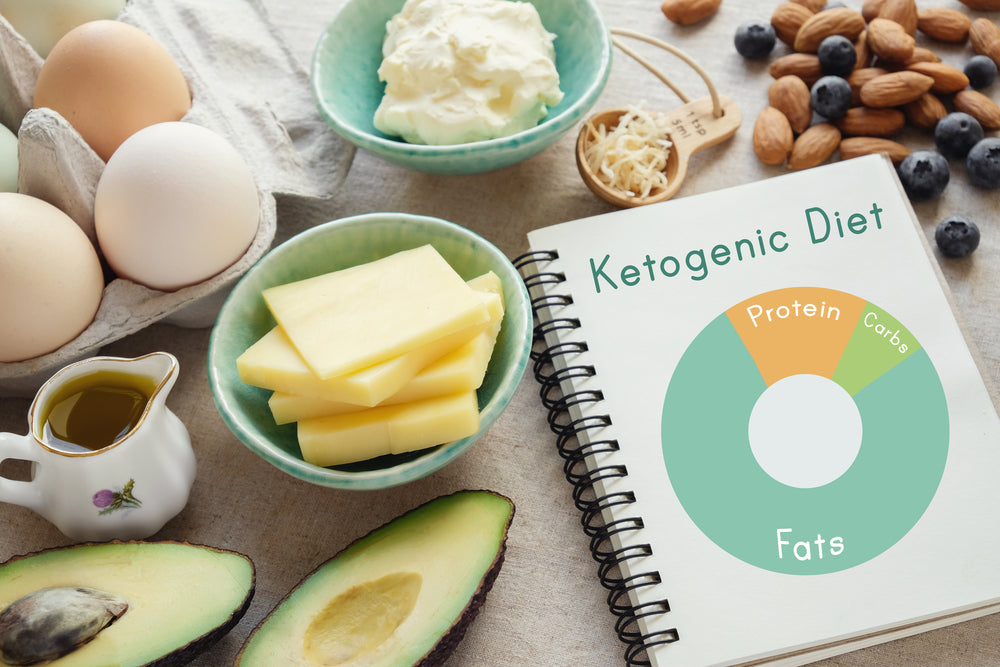A ketogenic diet, or keto diet, has been popular the last few years. If you’re jumping on the high-fat, low-carb bandwagon, or you are just wondering what the hype is about, you need to know the basics of a keto lifestyle. Aside from keeping carbs to about 25 grams of net carbs daily, what does a keto lifestyle mean? Here’s what you should know.
Weight Loss and Other Effects of a Keto Diet
Does a keto diet work? Will you lose weight? What are the health effects?
A keto diet lets your body burn fat instead of carbohydrates for fuel. If that fat comes from stored body fat, you will lose weight. A keto diet can help you lose weight if it ends up providing fewer calories than you need to maintain your weight. It cuts calories by limiting or eliminating certain foods. If you normally eat large amounts of high-carb foods, cutting them out can help you lose weight.
A keto diet may also help with health conditions, just like losing extra pounds can do. These are some examples.
- Reducing chronic inflammation, which can affect risk for conditions such as type 2 diabetes, cancer, heart disease, and more.
- Increasing energy levels, which is a byproduct of weight loss.
- Stabilizing blood sugar, which happens when insulin resistance improves.
A keto diet has risks, so it’s best to ask your healthcare provider before starting one. Short-term side effects can include feeling tired or nauseous, or having constipation or diarrhea. You may also notice bad breath. Longer term, there may be possible negative effects on the kidneys or liver.
Types of Keto Diets
Keto diets are low in carbohydrates, but there are some differences in how you might approach your very low-carb diet. These are the basic types.
- Standard Ketogenic Diet (SKD). In this diet, your daily consumption is pretty consistent. Fat is high, and protein is moderately high.
- Targeted Ketogenic Diet (TKD). This can include higher carbs sometimes to support increased activity levels as needed.
- Cyclical Ketogenic Diet (CKD). In this diet, you might have days in which your carb intake is pretty high, and some days with a very low carb intake. Athletes might use this.
- High-Protein Ketogenic Diet. This may be good for someone who has higher protein needs, such as a bariatric surgery patient.
Foods to Choose and Limit on a Keto Lifestyle
What will you eat on a keto diet? Basically, you eat low-carb foods and limit higher-carb foods. These are some examples of low-carb foods to include.
- Eggs, chicken, fish, shellfish, and ground turkey
- Cheese, cottage cheese, and Greek yogurt
- Avocados
- Nuts, seeds
- Oils
These are some high-carb foods to limit or avoid.
- Candy, cookies, cakes, ice cream, and other desserts.
- Grains, such as bread, pasta, rice, and cereal.
- Starchy vegetables, such as potatoes, yams, parsnips, butternut squash, corn, and peas.
- Beans, lentils, and split peas.
- Fruit
- Sugar-sweetened beverages, such as soft drinks and flavored coffee beverages.
Going beyond carbs, fats, and proteins, it’s good to also consider the nutritional value of the foods you eat. These are some general tips.
- When you do eat carbs, it’s best to choose less processed, high-fiber foods. Beans, whole grains,
- Protein sources should be lean rather than fatty. Chicken with skin, full-fat ground beef, and cuts of meat with visible fat are less heart-healthy than skinless chicken, lean ground turkey, and fish, for example.
- Processed meats can contain cancer-causing compounds.
- Fast foods and fried foods are not usually good choices.
Ask your healthcare provider about recommendations for fat. Some keto diet supporters think it is best to limit saturated fats, such as from butter and coconut, while others think those are good choices.
Keto Support
When you are in ketosis, your body produces metabolic products such as keto beta-hydroxybutyrate, or keto-BHB. The Keto BHB Plus Patch by PatchAid* contains keto-BHB with the goal of telling your body that you are in ketosis. The idea is that it makes it easier for your body to stay in ketosis.* The patch also contains garcinia cambogia and green tea extract, which are used for promoting normal metabolism and weight control.*
Exercise on a Keto Lifestyle
Exercise is not the focus of a keto diet, but it can support weight loss by burning calories. Research seems to agree that exercising regularly is important in keeping the lost weight off for the long-term. Weight loss aside, exercise has health benefits such as improving blood sugar control, supporting healthy blood pressure and cholesterol levels, and lowering the risk for conditions such as diabetes and heart health.
So how does exercise fit into a keto lifestyle? When carbs are too low, you may have trouble exercising. You may feel tired or muscles may feel weak. You may need to increase your carb intake to support your activity. If you do this gradually and continue to test for ketones, you can stay in ketosis while getting enough exercise to support better health.
Adjusting Your Macros
There may be times when your goals for carbs, fat, and protein may need to change. For example, you may need to increase your carb intake if you are especially active, or you may need to lower carbs if you are no longer in ketosis. You may also find that you need more protein, such as if you are a bariatric surgery patient.
A keto lifestyle is a major undertaking, and you may need a little help with it. The Keto BHB Plus Patch by PatchAid contains byproducts of ketogenesis that may signal to your body that you’re in ketosis.* Why not take a few seconds a day to apply a patch as part of your keto regimen? Just be sure to talk to your healthcare provider before using any nutritional supplement.
*The Food and Drug Administration has not evaluated these statements. PatchAid patches are not intended to diagnose, treat, cure or prevent any disease. Anyone with a medical condition should seek the advice of a licensed medical practitioner. Individual results may vary.







